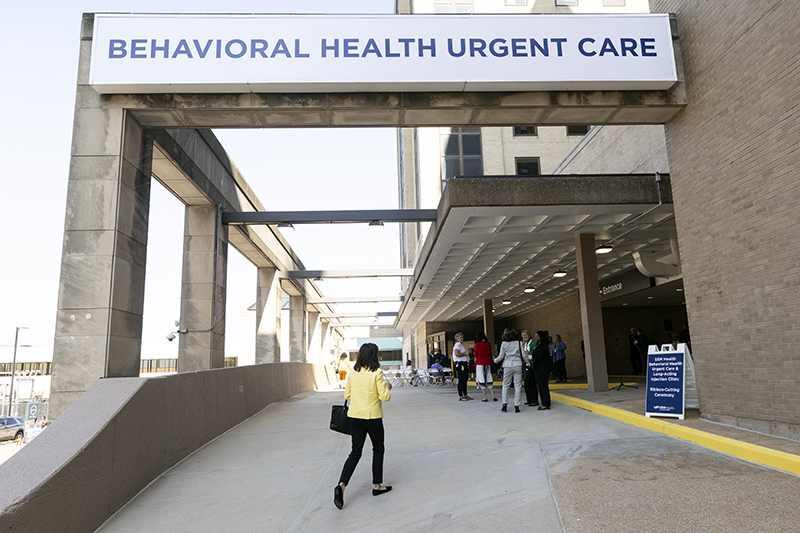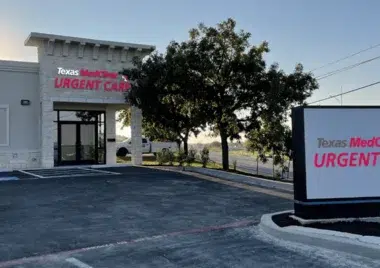Specialist Advice on Navigating Clinic Options for Urgent Care
Wiki Article
The Relevance of Urgent Care Centers in Bridging the Space In Between Primary Treatment and Emergency Situation Providers
Urgent treatment facilities have arised as a vital component of the health care landscape, effectively attending to the vital demand for instant clinical attention without considering emergency situation solutions. By offering look after non-life-threatening conditions, these centers help to ease the worry on emergency clinic and improve individual access to prompt treatment. Their expanded hours and varied solutions deal with a growing population looking for alternatives to typical main care. Nonetheless, the developing duty of urgent treatment facilities raises crucial questions about their combination within the more comprehensive healthcare system and the ramifications for individual results and source allocation.Review of Urgent Treatment Centers
Urgent treatment facilities have actually become a vital part of the medical care shipment system, providing obtainable clinical services for non-life-threatening problems. These centers usually operate outdoors conventional workplace hours, offering individuals an alternative to emergency clinic and main care setups. Individuals seeking immediate care commonly present with problems such as minor injuries, infections, or health problems that require timely interest but do not present an immediate threat to life or arm or leg.Immediate treatment centers are staffed by a variety of healthcare experts, consisting of medical professionals, registered nurse experts, and doctor aides, who are furnished to detect and treat numerous clinical problems. They frequently include diagnostic tools such as X-ray makers and laboratory services, allowing them to supply extensive treatment on-site.
The establishment of urgent care facilities has been influenced by the boosting need for timely medical services in a hectic culture, where patients may have a hard time to protect consultations with main treatment service providers. Consequently, these facilities intend to reduce congestion in emergency situation divisions, improving general health care efficiency. Furthermore, urgent care centers often act as a bridge in between primary care and emergency solutions, ensuring that clients get ideal treatment tailored to their particular medical needs.

Advantages of Urgent Treatment Services
Accessing prompt healthcare is a significant benefit of urgent care services. These centers provide instant focus for non-life-threatening conditions, efficiently minimizing delay times contrasted to conventional emergency divisions. Clients seeking look after minor injuries, health problems, or urgent health problems can obtain therapy without the lengthy hold-ups commonly related to medical facility check outs.An additional key advantage is the extended hours of procedure. Several immediate care facilities are open evenings and weekend breaks, accommodating individuals that may not be able to visit their key treatment provider during conventional workplace hours. This versatility makes urgent care an easily accessible alternative for those with hectic routines or unexpected health and wellness problems.
Furthermore, urgent care centers commonly provide a vast array of services, including diagnostic screening, X-rays, and fundamental lab services. This comprehensive method enables fast medical diagnosis and therapy, boosting person satisfaction.
Additionally, immediate care facilities are generally more cost-efficient than emergency clinic, making them an appealing option for people without insurance or those with high-deductible plans. On the whole, urgent care solutions play a critical function in offering easily accessible, timely, and economical treatment.
Contrast With Health Care
Usually, individuals often consider their choices between immediate care centers and key care providers when looking for clinical interest. Both serve essential functions in the healthcare system, yet they vary considerably in scope, access, and expense.Key treatment providers are normally the first point of contact for clients, concentrating on long-term wellness administration, preventative treatment, and persistent illness monitoring. They offer continuity of care, cultivating a patient-provider connection that enables for comprehensive health analyses and customized treatment plans. Nevertheless, scheduling a visit can be taxing, often requiring days or weeks ahead of time.
In comparison, urgent care facilities give immediate treatment for non-life-threatening problems that require punctual interest, such as small injuries or infections. These look at this web-site facilities typically run beyond typical office hours, fitting clients that might not be able to see their main treatment company during normal organization times. Additionally, urgent care is generally more cost-efficient than emergency space check outs, making it an attractive choice for those with minimal healthcare access.
Eventually, while urgent care facilities and health care companies both add to client health, they deal with distinct requirements, get more making it important for clients to identify which choice ideal lines up with their conditions.
Emergency Situation Providers Interaction
The communication between immediate treatment centers and emergency solutions is an essential aspect of the health care landscape, particularly when individuals encounter situations that may intensify in extent. Immediate treatment centers work as a bridge between medical care and emergency departments, attending to non-life-threatening conditions that need prompt focus. This cooperation enhances person outcomes and enhances source allowance within the healthcare system.When individuals provide with not dangerous however urgent issues, urgent care centers can effectively manage their demands, alleviating blockage in emergency rooms. When a patient's condition surpasses the extent of immediate care therapy, Facilities equipped with diagnostic abilities can promote prompt references to emergency services. This seamless interaction helps make sure that clients receive the suitable level of care without unneeded delays.
Additionally, effective interaction in between urgent care suppliers and emergency services is important. Sharing individual information and treatment histories fosters collaborated treatment, lessening the danger of redundant tests and procedures. As healthcare continues to evolve, the dynamic connection between immediate treatment centers and emergency situation services will play a pivotal role in improving person care efficiency, contentment, and overall wellness outcomes within the area.
Future of Urgent Care Facilities
As healthcare needs evolve, the future of immediate treatment facilities is positioned to end up being progressively important to the general medical environment (Urgent Care). These centers are likely to increase their functions by including sophisticated technologies, such as telemedicine, man-made knowledge, and digital health document integration. This will certainly enhance client access and streamline care control between urgent care, key treatment, check that and emergency solutions
Additionally, immediate care facilities are expected to diversify their service offerings to include preventative treatment and persistent condition management. This shift will position them as vital elements in taking care of populace wellness, minimizing the burden on emergency departments, and dealing with gaps in health care availability.
The expanding fad of value-based care will additionally increase the transformation of immediate treatment centers, motivating them to focus on individual end results and contentment. Facilities might likewise embrace collective method designs, functioning very closely with experts and health care suppliers to ensure comprehensive patient management.
Conclusion
To conclude, urgent treatment centers offer an essential function in the medical care system by providing prompt access to therapy for non-life-threatening problems, properly alleviating stress on emergency solutions. Their extended hours and varied series of solutions enhance patient convenience and satisfaction, while additionally guaranteeing appropriate treatment shipment. As medical care needs proceed to progress, the role of immediate treatment facilities will likely become increasingly considerable, more bridging the gap in between health care and emergency situation services.The facility of immediate treatment centers has been affected by the increasing demand for timely clinical services in a hectic culture, where patients might have a hard time to safeguard appointments with primary treatment providers. Furthermore, immediate treatment centers usually serve as a bridge between main care and emergency solutions, ensuring that clients get proper care customized to their details clinical needs.
Lots of immediate treatment centers are open evenings and weekends, suiting clients who might not be able to see their key treatment service provider throughout conventional workplace hours (Urgent Care). As medical care proceeds to evolve, the dynamic connection in between urgent treatment facilities and emergency situation solutions will certainly play an essential function in boosting person treatment performance, complete satisfaction, and general health and wellness end results within the neighborhood

Report this wiki page